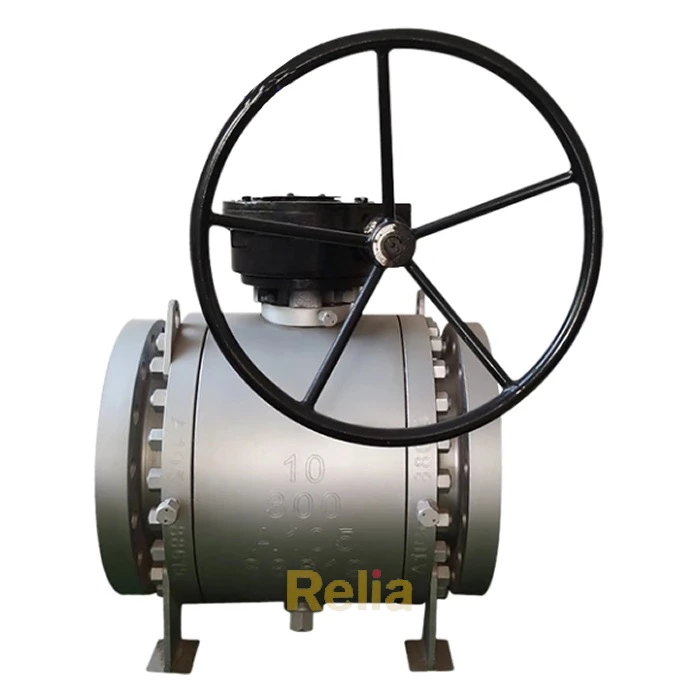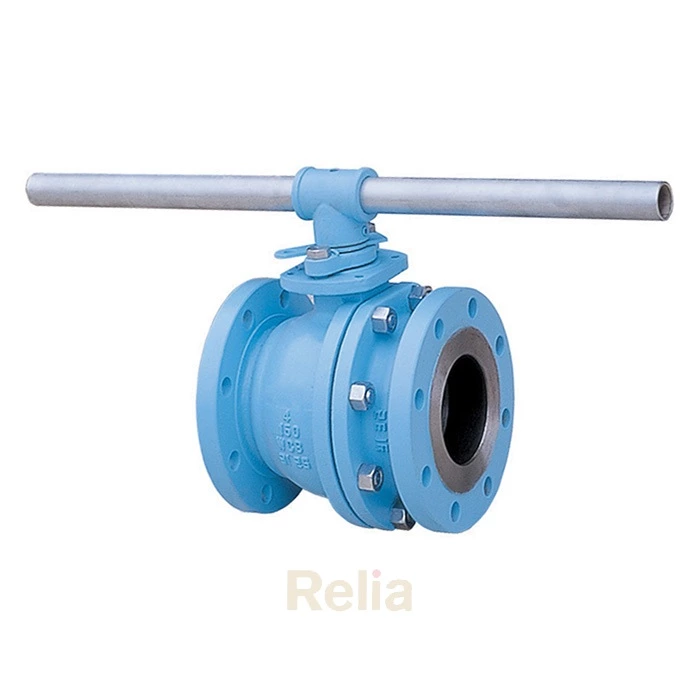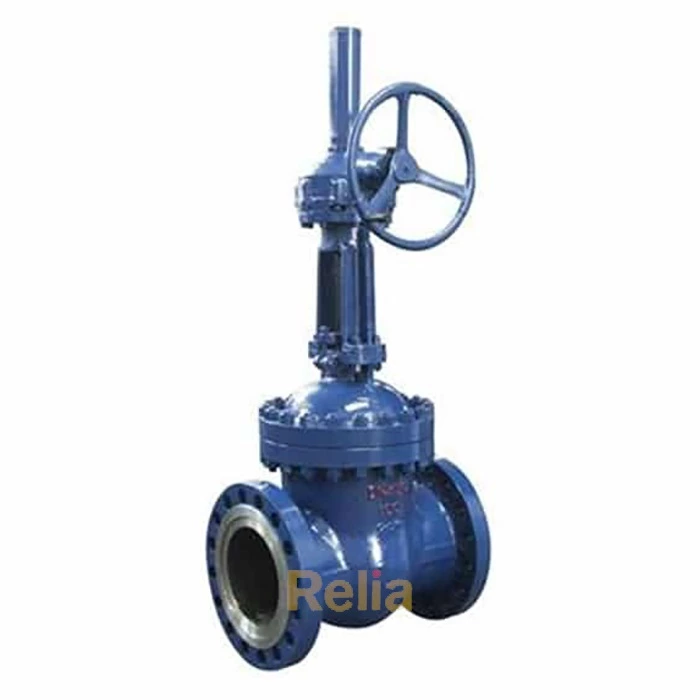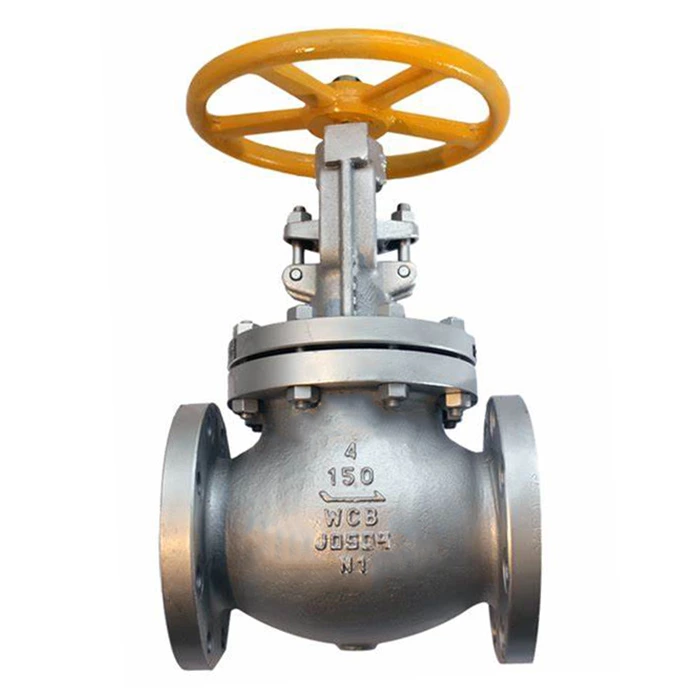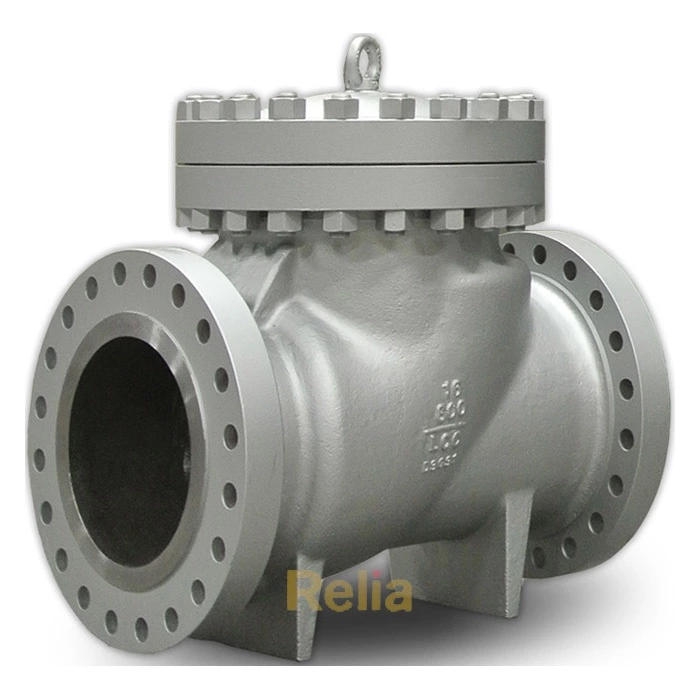ISO 5208: Industrial valves Pressure testing of metallic valves
1 Scope
This International Standard ISO 5208 specifies examinations and tests that a valve manufacturer needs to act upon in order to establish the integrity of the pressure boundary of an industrial metallic valve and to verify the degree of valve closure tightness and the structural adequacy of its closure mechanism.
This International Standard is intended to be applied in conjunction with the specific requirements of a valve product standard to the extent cited by the product standard as a normative reference.
Where requirements of a product standard differ from those given in this International Standard, the requirements of the product standard apply.
This International Standard is not applicable to the safety aspects of pressure testing.
Table 4 — Maximum allowable closure test leakage rate
| Test fluid | Unit leakage rates | Rate A | Rate AA | Rate B | Rate C | Rate CC | Rate D | Rate E | Rate EE | Rate F | Rate G |
| Liquid | mm3/s | No visually detect- able leakage for the duration of the test | 0,006×DN | 0,01×DN | 0,03×DN | 0,08×DN | 0,1×DN | 0,3×DN | 0,39×DN | 1×DN | 2×DN |
| Drops/s | 0,0001×DN | 0,00016×DN | 0,0005×DN | 0,0013×DN | 0,0016×DN | 0,0048×DN | 0,0062×DN | 0,016×DN | 0,032×DN | ||
| Gas | mm3/s | 0,18×DN | 0,3×DN | 3×DN | 22,3×DN | 30×DN | 300×DN | 470×DN | 3000×DN | 6000×DN | |
| Drops/s | 0,003×DN | 0,0046×DN | 0,0458×DN | 0,3407×DN | 0,4584×DN | 4,5837×DN | 7,1293×DN | 45,837×DN | 9,1673×DN |
NOTE 1 The leakage rates only apply when discharging test fluid to the atmosphere.
NOTE 2 The closure leakage rate that applies is either that identified in a valve product standard or a leakage rate identified in a purchaser’s valve procurement purchase order that is more stringent than that specified in the product standard.
NOTE 3 For the definition of visually detectable leakage see 2.12.
NOTE 4 There is a correspondence between the leakage rate acceptance values of API 598 and the leakage values Rate A as applied to DN≤50, Rate AA-Gas and Rate CC-Liquid for other than metal seated check valves and for check valves Rate EE-Gas and Rate G-Liquid. Rates A, B, C, D E, F and G correspond to values in EN 12266–1.
4 Requirements for pressure testing
4.1 Forewarning
A user of this International Standard needs to properly take into account the hazard involved with working with pressurized gases and liquids.
4.2 Location
Pressure tests shall take place either at the site of the valve manufacture or at a test facility under the supervision of the valve manufacturer.
4.3 Test equipment
4.3.1 The test equipment shall be of such a design, that it does not subject the valve to externally applied loads that may affect the results of the test. When end-clamping devices are used, the valve manufacturer shall be able to demonstrate that, during the valve closure test, they do not serve to reduce the resultant leakage. Valves designed for installation between flanges, e.g. wafer style check valve or butterfly valves, shall not have test equipment clamping forces applied that are so great as to bear upon the pressure test results.
4.3.2 When equipment such as volume loss detection devices are used, the manufacturer shall be capable of demonstrating equivalence of the system with the requirements of this International Standard.
4.4 Pressure measuring equipment
The equipment used for measuring test fluid pressure shall measure the fluid pressure with an accuracy of ± 5 % of the required test pressure.
4.5 Shell surfaces
Before the shell test, valves shall not be externally painted or otherwise coated with materials capable of sealing against leakage from external surfaces of the shell. However, valves with internal liners, internal linings or internal coatings that form a design feature of the valve may be tested with the liner, lining or coating in place. In the event a purchaser specifies a retest of the shell test of valves that have been painted, retesting may be without removal of external paint or coatings.
4.6 Test fluid
The test fluid to be used, as specified in the relevant tests detailed in this International Standard, shall be:
— water, that may contain a corrosion inhibitor, kerosene or other appropriate liquid having a viscosity not greater than that of water, or
— air or other suitable gas.
The temperature of the test fluid shall be between 5 °C and 40 °C. Pressure testing valves with shell components of austenitic stainless steel, using water as the test fluid, requires that the chloride content of the water shall not exceed 100 × 10 −6 (100 ppm).
NOTE A purchaser may specify, in a valve procurement purchase order, that a wetting agent be added to water used as a test fluid.
4.7 Test pressure
Except for low-pressure closure testing, test pressures are related to the valve CWP which in turn is related to the shell material of the valve under test.
NOTE- Piping systems in which valves are installed are subjected to pre-operational pressure testing. Therefore, valve standards, by and large, include requirements for CWP-related marking to be on an attached valve identification label or valve body.
4.8 Pressure tests
4.8.1 Compliance with this International Standard for pressure testing requires satisfactory execution of the required tests listed in Table 1, taking into account the exceptions and clarifications of 4.8.3.
4.8.2 In the event that a purchaser specifies optional tests as shown in Table 1, the optional tests shall be performed in addition to Table 1 required tests.
4.8.3 The following clarifications and exceptions to Table 1 are applicable:
— for plug valves that rely on a sealing compound to effect a closure seal, a high-pressure closure test is required and the low-pressure test is an option;
— for valves having bellows stem sealing, a backseat test is not required;
— for valves specified as double block and bleed, a high-pressure closure test is required and the low-pressure test is an option.
4.8.4 For the purpose of identifying required tests, test duration times and calculating closure leakage rates, it is necessary to establish the equivalent DN number for those valves that have size designations other than DN. The equivalent DN numbers of valves having flanged ends, threaded ends, weld ends, capillary or compression ends shall be as given in Table A.1.
4.8.5 A shell test option using gas as a test fluid may be specified in a valve procurement purchase order. In this event precautions are vital to safe conduct of this test, see 4.1.
4.9 Closure test compliance
Valve types listed in Table 1, for which a high-pressure closure test is an option, are nevertheless required to be able to pass the test (as a test of the valve closure structure). Results of tests confirming the ability of the valve design to pass the high-pressure closure test shall be supplied when specified in a valve purchase order.
Table 1 — Prescribed pressure tests
| Test | DN | PN or Class | Gate Valve | Globe Valve | Plug Valve (note a) | Check Valve | Floating ball valve | Eccentric butterfly or trunnion ball valve | Concentric butterfly valve |
| Shell Test, Liquid test | All | All | Required | Required | Required | Required | Required | Required | Required |
| Shell Test, Gas test | All | All | Optional | Optional | Optional | Optional | Optional | Optional | Optional |
| Backseat Test, Liquid test (note b, c) | All | All | Optional | Optional | Not Required | Not Required | Not Required | Not Required | Not Required |
| Closure test, Gas low-pressure | DN≤100 | Class ≤ 1 500 and PN ≤ 250 | Required | Optional | Required | Optional | Required | Required | Optional |
| Class > 1 500 and PN > 250 | Optional | Optional | Optional | Optional | Required | Optional | - | ||
| DN > 100 | Class ≤ 600 and PN ≤ 100 | Required | Optional | Optional | Optional | Required | Required | Optional | |
| Class > 600 and PN > 100 | Optional | Optional | Optional | Optional | Required | Optional | - | ||
| Closure test, Liquid High-pressure | DN≤100 | Class ≤ 1 500 and PN ≤ 250 | Optional | Required | Optional | Required | Optional | Optional | Required |
| Class > 1 500 and PN > 250 | Required | Required | Required | Required | Optional | Required | - | ||
| DN > 100 | Class ≤ 600 and PN ≤ 100 | Optional | Required | Required | Optional | Optional | Required | ||
| Class > 600 and PN > 100 | Required | Required | Required | Required | Optional | Required | - | ||
| Closure test, Gas High-pressure | All | All | Optional | Optional | Optional | Optional | Optional | Optional | Optional |
NOTE 1- Successful completion of an optional test does not relieve the manufacturer from also successfully completing the required test.
NOTE 2- In the case of soft seated valves, a high-pressure closure test may degrade subsequent closure sealing performance in low-pressure applications. Therefore, this high-pressure closure test should only be used as type test.
a) Plug valves that rely on a sealing compound to effect a closure seal may be closure tested with the compound installed.
b) Successful completion of a backseat test should not be interpreted as a recommendation by the valve manufacturer that, while an installed valve is pressurized, the stem seal may be altered, repaired or replaced when backseated.
c In the case of bellows stem sealed valves, a backseat test is not required.
4.10 Shell test
4.10.1 Shell test fluid
The shell test fluid shall be:
a) for the required shell test listed in Table 1, water or a liquid complying with 4.6;
b) for the option shell test listed in Table 1, gas complying with 4.6, see also 4.8.5.
4.10.2 Shell test procedure
— The stem seals shall be in place and if the seal is adjustable it shall be adjusted to accommodate the test pressure.
— The obturator shall be in a partially open position.
— The valve end connections shall be blanked off and in conformance with 4.3.
— All cavities of the valve shall be filled with the test fluid.
— The shell test fluid pressure specified in 4.10.3 shall be progressively applied.
— The shell test pressure shall be maintained for a test duration not less than the time specified in Table 2.
— The entire external surface of the shell shall be visually examined.
— If the test fluid is a liquid, the external surface of the shell shall be visually examined for leakage.
— If the test fluid is a gas, the external surfaces of the shell shall be coated with a leak detection fluid or submerged in water not more than 50 mm below the upper surface and an examination shall be made for the continuous formation of bubbles.
4.10.3 Shell test pressure
The shell test pressure shall be as follows:
a) if the test fluid is a liquid, for the required shell test (Table 1), the shell test pressure shall be a minimum of × 1,5 the CWP;
b) if the test fluid is a gas, for the optional shell test (Table 1), the shell test pressure shall be a minimum of × 1,1 the CWP.
If an optional gas shell test is to be performed, the less hazardous required liquid shell test should be performed first in order to verify the pressure retention capability of the valve structure. See 2.1.
4.10.4 Shell test duration
The shell test pressure shall be maintained for a period of time not less than the time specified in Table 2.
4.10.5 Shell test acceptance criteria
The shell test acceptance criteria shall be as follows:
— if the test fluid is a liquid, visually detectable leakage, as described in 2.12, from any external surface of the shell is cause for rejection;
— if the test fluid is a gas, the continuous formation of bubbles from any submerged external surface or any external surface coated with a leak detection fluid is cause for rejection.
When the test fluid is a liquid, stem seal leakage is permitted provided that there is no visually detectable leakage at the stem seal when the test pressure is × 1,1 the CWP. This may be demonstrated initially as the test pressure is being raised to the full shell test requirement.
| Valve Size | Minimum test duration (note a), in seconds | |||
| Shell | Optional backseat | Closure | ||
| All valves | When relevant (note b) | Isolation valves | Check valves | |
| DN≤50 | 15 | 15 | 15 | 60 |
| 65≤DN≤150 | 60 | 60 | 60 | 60 |
| 200≤DN≤300 | 120 | 60 | 120 | 60 |
| DN≥350 | 300 | 60 | 120 | 120 |
Note: a) The test duration is the period of time for inspection after the test valve is fully prepared and under test pressure.
b) See 4.8.2.
4.11 Optional backseat test
4.11.1 General
A backseat test, for valves having this feature, shall be performed in accordance with the requirements of this subclause when this option is specified in a valve procurement purchase order.
4.11.2 Backseat test fluid
The backseat test fluid shall be water or a liquid complying with 4.6.
4.11.3 Recommended backseat test procedure
— The stem seal adjustment shall be set, so that the force-tending effect on a seal has been negated.
— The backseat shall be fully engaged.
— The valve end connections shall be blanked off and in accordance with 4.3.
— All cavities of the valve shall be filled with the test fluid.
— The test fluid pressure specified in 4.11.4 shall be progressively applied.
— The test pressure shall be maintained for a test duration not less than the time specified in Table 2.
— The shell-seal-stem interface shall be visually examined.
— The backseat test, having been made either before or after the shell test, shall have the proper stem seal adjustment restored.
4.11.4 Backseat test pressure
The backseat test pressure shall be a minimum of × 1,1 the CWP.
4.11.5 Backseat test duration
The backseat test pressure shall be maintained for a period of time not less than the time specified in Table 2.
4.11.6 Backseat test acceptance criteria
Visually detectable leakage from any external interface of the shell-seal-stem is cause for rejection.
4.12 Closure test
4.12.1 General requirements
4.12.1.1 Except for plug valves that rely on a sealing compound to effect a closure seal, closure sealing surfaces shall be clean, free from oil, grease or compounds that may serve to reduce leakage. However, if necessary, to prevent galling of surfaces in contact, these surfaces may be coated with a film of oil whose viscosity is not more than that of kerosene.
4.12.1.2 Leakage detected as originating from behind seat rings, through disc porosity, around liners or resilient closure materials shall be cause for rejection.
4.12.1.3 Valves with body or bonnet cavities, e.g. gate, ball or plug valves, shall be tested using a test method whereby the cavities are filled with the test fluid. This is to ensure that closure leakage measurement is not compromised because of the unoccupied volume.
4.12.2 Closure test fluid
The closure test fluid for both required and optional tests of Table 1 shall be water or other liquid complying with 4.6, or gas. When testing with liquid, the valve chamber under test shall be essentially free of air.
4.12.3 Leak detection
4.12.3.1 The closure test method, except for double block and bleed valve designs (see Table 3), shall have the test pressure applied to one side of the valve obturator and closure leakage assessed on the opposite side, the side that is open to the atmosphere.
4.12.3.2 As an alternative to 4.12.3.1, fluid displacement measurement devices may be used, provided that:
a) the measurement accuracy is consistent with the closure test leakage acceptance criteria;
b) the valve manufacturer can demonstrate and validate that the procedure yields results that are equivalent to the tests under 4.12.3.1.
4.12.3.3 As an alternative to 4.12.3.1, fluid volumetric measurement devices (generically referred to as bubblers) may be used, provided that:
a) the measurement accuracy is consistent with the closure test leakage acceptance criteria;
b) the valve manufacturer can demonstrate and validate that the procedure yields results that are equivalent to the tests under 4.12.3.1;
c) the manufacturer’s test procedure requires that the volumetric device be calibrated using the same test fluid and at the same temperature as used for the closure test;
d) the manufacturer’s test procedure requires that the test duration do not commence until flow through the test tubing is established and stabilized;
e) for valve sizes DN > 50, this closure test leakage measurement method is specified by the purchaser
in their valve procurement purchase order.
4.12.4 Closure test pressure
4.12.4.1 The closure test pressure, subject to the exceptions of 4.12.4.2 and 4.12.4.3, shall be as follows:
a) if the test fluid is a gas, the closure test pressure shall be 1,1 times the CWP or 6 bar ± 1 bar;
b) if the test fluid is a liquid, the closure test pressure shall be a minimum of × 1,1 the CWP.
4.12.4.2 For valves, including combination non-return types fitted with manual or power actuated torque multiplying devices, the required high-pressure closure test shall be performed at 110 % of the obturator design differential pressure used to size the device. The identification plate that the manufacturer affixes to the valve shall include this design pressure differential limitation.
4.12.4.3 Valves that are designed for operating conditions in which the pressure differential across the obturator is limited to values less than the CWP rating, because obturator actuating devices (direct, mechanical, fluid or electrical) would likely be damaged by or be incapable of function at high differential pressures, may be tested at a lower closure pressure than prescribed in 4.12.4.1 b). This exception may be exercised only by agreement between the manufacturer and valve purchaser. The closure test pressure shall then be at × 1,1 the design differential pressure value. The identification plate that the manufacturer affixes to the valve shall include the design pressure differential limitation.
4.12.5 Closure test duration
The closure test pressure shall be maintained for a period of time not less than the time specified in Table 2.
